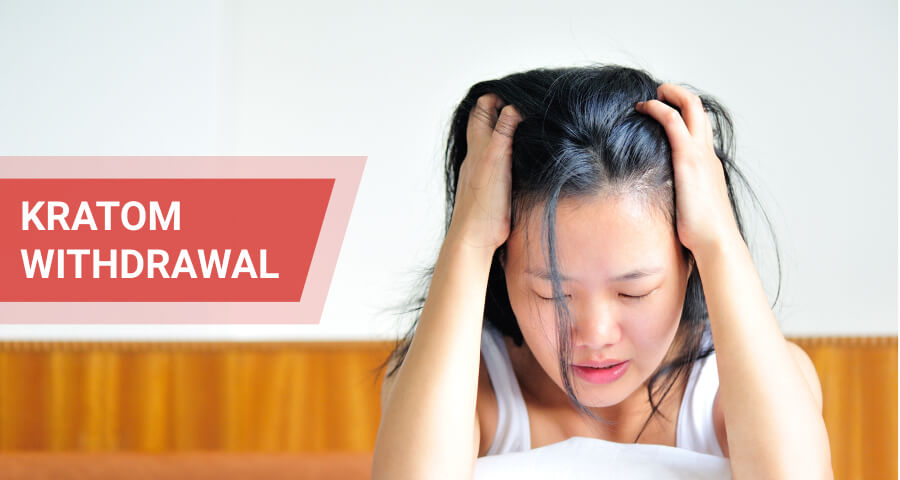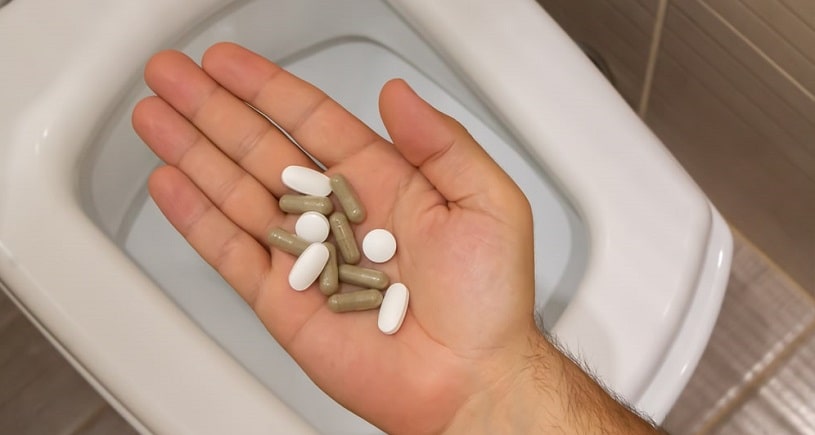Quitting Kratom Safely: Kratom Withdrawal Symptoms

Kratom is a drug that isn’t precisely an opioid but, if taken in high enough doses, it could act similarly to opioids. The similarities aren’t just in the mind-altering effects both substances can have but also in the addiction aspect. It can be a highly addictive drug, and abuse can cause long-term adverse effects on the user’s health. Read along to know about Kratom withdrawal symptoms and ways on how one can quit it safely.
Table Of Contents:
Kratom Withdrawal Symptoms
Kratom, or Mitragyna speciosa, has similar effects as opioids. In Thailand, where the drug originates from, 2% of all admissions in rehab facilities in 2011 involved its addiction. Since it is a different substance by nature than opioids, Kratom withdrawal symptoms will differ from person to person. This statement also applies when it comes to addiction. The withdrawal signs and symptoms themselves and their severity will depend on each individual and their body chemistry and drug use history.

A study done in 2017 showed that withdrawal symptoms could be difficult and require much mental and physical strength to go through. Here are a few Physiological and Psychological signs and symptoms.
Physiological Symptoms:
- Nausea
- Body pains and aches
- Abdominal pain
- Tremors
- Sweating
- Decreased appetite
- Fever
- Hot flashes
- Diarrhea vomiting
- Muscle spasms
- Headaches
- Insomnia
Psychological Symptoms:
- Cravings
- Anger
- Tension
- Nervousness
- Restlessness
- Depression
Research on people using the drug Kratom for 3 to 30 years and had its abuse problems showed that they were also found to go through withdrawal syndrome. They experienced increased aggression, possible hostility, emotional variance and liability, runny nose, muscle and bone aches, sudden jerking of the limbs. Some people using extensive amounts of the substance for longer also exhibited psychotic symptoms such as delusion, confusion, and hallucinations.
Records from the National Poison Data System and a county medical examiner’s office in New York State showed that 4% of the people had suffered hallucinations due to their withdrawal symptoms.
Another study shows that it can also affect the liver. Over 50 cases had been recorded in the survey to have undergone liver damage using the substance.
Kratom Withdrawal Timeline
As this substance reacts differently for different people, several other aspects need to be kept in mind to determine Kratom half-life. The drug’s half-life helps determine the onset of withdrawal and its duration. It’s not just limited to the last time the user had contact with the substance. Their age, overall health, genetics, body weight, and several other aspects affect their own Kratom withdrawal timeline.
Below Is a General Timeline That Has Been Noted in a Majority of People:
- Day 1: The first symptoms usually appear in 10-12 hours after stopping Mitragyna speciosa. Their intensity varies from mild to severe and can include nausea, flu-like symptoms, anxiety, and depression.
- Day 2-3: The second and third days of Kratom comedown are the most intense, with symptoms felt the most severe. Cravings will become intense, and at this stage, professional support and assistance are highly recommended. Some of the individual’s symptoms include but are not limited to anxiety, depression, body aches, mood swings, and cravings.
- Day 4-6: During this period, the symptoms of Kratom withdrawal gradually start to become less intense. The physical symptoms will be bearable, but the psychological ones will continue for some time. Depression and cravings might persist.
- Day 7 and beyond: Most physical symptoms are gone at this stage, but the psychological ones are still expected to linger. Therefore, it is advised that the treatment phase of sobriety be continued under professional guidance, even if the detox process has been completed, to avoid the possible relapse. Just like people fall off the wagon during an opioid detox, the same with Kratom.
Staying in contact with a doctor helps make sure that the detox is completed fully, and just in case something does happen, and there’s a relapse, they can help restart the process immediately.
Factors Affecting Withdrawal Duration
Several factors affect the Kratom withdrawal duration.
They Include:
- Age
- Frequency of intake
- Period of usage
- Dosage
- The potency of strain (the most potent Kratom strains last longer)
- Individual’s metabolism
- Overall health condition of a person
- Presence of mental health problems
- Concomitant use of other drugs
- Dietary habits
- History of addiction, opioid abuse, or relapse
- Any ongoing medicinal treatments that could interfere with the withdrawal
Quitting Kratom
Just like any other opioid or addictive substance, there are several different ways you can leave it. Some methods work for people better than others, so how they react to the technique will differ from person to person.
Quitting Kratom Cold Turkey
When trying to quit Kratom, the quickest way to do it is by quitting cold turkey. However, this may also be the most painful way. By stopping using the drug all at once, you suddenly deprive the body of what it is dependent on. Withdrawal symptoms might hit extremely hard if the person using the drugs had been doing so for a long time or had been taking highly high doses for a short amount of time. A study done on people quitting Kratom use cold turkey showed that 70% of them experienced mild anxiety while 81% had mild depression.

However, if the person using the drug had only been occasionally using it or used a minimal amount, they might not even experience any withdrawal symptoms. If they do, they could be limited to flu-like signs.
Either way, it is advised that you consult your doctor before quitting cold turkey, so they are in the loop, and if you end up suffering extreme withdrawal symptoms, they can prescribe OTC medicinal treatment to help ease the pain.
Tapering Off Kratom
Tapering off means a gradual reduction of the doses so that the brain has time to adjust to this change. The individual should also be ready to experience mental and physical discomfort and craving during this process. Still, withdrawal symptoms are much lighter and often do not interfere with daily tasks or absent at all. For those who use the most potent strains, gradually reducing the dosage would be the most optimal way.
Just like an opioid dependency, Kratom dependency is complicated to get rid of. Even though people could taper off by creating a schedule themselves, depending on how much they would generally use, they might taper too slowly. It is best to involve a doctor who does a complete assessment of the person’s health and makes a custom tapering schedule. Doctors can also help with medicinal treatment to ease withdrawal and its symptoms, and to make the transition a little bit easier.
Kratom Detox
Although it does seem possible to do a drug detox at home, there may be a large percentage of people who can’t do it alone. Kratom is a substance that’s been proven to be extremely difficult to quit using, and since it is available over the counter, it’s easy to fall back into the pattern of using it. If things get out of hand, a person’s health can deteriorate reasonably quickly, and they might need medical attention. For them, a better option would be medically assisted detoxification.
Having trained medical professionals with them at every step can make the transition a lot easier. They can create the treatment schedule and provide any medicinal aid to make the process smoother.
If the withdrawal symptoms are on the more severe side, they can be there for immediate treatment, which is better than an untrained helper at home. It’s advised to at least contact a doctor if the patient has chosen to detox independently.
Reducing Kratom Withdrawal Discomfort
Some things can make the withdrawal less complicated. Still, before trying them, it is best to consult a doctor regarding their efficiency and safety in each particular case.
Below There Are Some Tips on How to Ease the Withdrawal:
- Healthy Diet And Vitamins. During the Kratom detox, the body might experience nutritional deficiencies, such as calcium, potassium, or magnesium, which can worsen pain and muscle spasms. A healthy and light diet will improve this nutritional imbalance, and taking multivitamin supplements would help ease the symptoms and speed up the recovery.
- Drink Water. Two of the Kratom withdrawal symptoms, which can make the body dehydrated, are diarrhea and excessive sweating. That is why drinking lots of fluids can prevent dehydration side effects. Besides water, one can also drink sports drinks and coconut water to restore electrolytes.
- Hot Baths. Hot baths can improve headaches, muscle pain, back pain and even help a person sleep. Adding salts and essential oils will help soothe sore muscles. Do not take hot baths during fever episodes.
- OTC Medication. Some over-the-counter medication can also help with Kratom withdrawal symptoms. Imodium can help in diarrhea, while topical analgesics, ibuprofen, or naproxen can aid in muscle pains and aches. Melatonin and Valerian root are natural sleep supplements that can help with insomnia. However, it is better to get a doctor’s consultation before taking any medications to ensure their efficacy and safety in every specific case.
- Distractions. Some people can find a retreat from Kratom overwhelming. That is why distractions such as hobbies and other entertainment activities can prove relief from light symptoms. These activities help the individual keep their mind busy and away from the process and help release endorphins. Watching comedies, reading books, spending time with friends, and doing hobbies are some of the distractions that may work.
- Talk To A Doctor. Regardless of the severity of the withdrawal symptoms, a physician’s consultation is the first thing to do. A doctor can offer valuable Kratom withdrawal help, explaining to the individual the entire process, what they should expect, and what to do to ease the symptoms. Also, a doctor can prescribe medication that is only available with a prescription.
Kratom Addiction Treatment
It doesn’t matter if one uses the cold-turkey method or tapers Kratom detox for quitting. For some people, the symptoms of stopping the drug are just too much. After 36 deaths associated with Kratom, the Food and Drug Administration even had to issue a public warning about it in 2017. In such cases, asking for professional help can make a huge difference.
Many professional detox facilities and specialized drug rehab centers can help those dealing with withdrawal and addiction. The addiction treatment programs have been specifically designed to help the individual cope with acute Kratom withdrawal symptoms and help them stay sober after stopping the drug. There are numerous such clinics in the states where Kratom is legal. That’s why check the local hotlines and seek professional help.
Hope Without Commitment
Find the best treatment options. Call our free and confidential helpline
Most private insurances accepted
Page Sources
- Veltri, C., & Grundmann, O. (2019). Current perspectives on the impact of Kratom use. Substance abuse and rehabilitation, 10, 23. https://www.ncbi.nlm.nih.gov/pmc/articles/PMC6612999/
- Post, S., Spiller, H. A., Chounthirath, T., & Smith, G. A. (2019). Kratom exposures reported to United States poison control centers: 2011–2017. Clinical toxicology, 57(10), 847-854. https://pubmed.ncbi.nlm.nih.gov/30786220/
- Singh, D., Narayanan, S., Müller, C. P., Swogger, M. T., Rahim, A. A., Leong Bin Abdullah, M. F. I., & Vicknasingam, B. K. (2018). Severity of Kratom (Mitragyna speciosa Korth.) psychological withdrawal symptoms. Journal of psychoactive drugs, 50(5), 445-450. https://pubmed.ncbi.nlm.nih.gov/30152738/
- Drug Enforcement Administration, 2019, https://www.deadiversion.usdoj.gov/drug_chem_info/Kratom.pdf
- Eggleston, W., Stoppacher, R., Suen, K., Marraffa, J. M., & Nelson, L. S. (2019). Kratom use and toxicities in the United States. Pharmacotherapy: The Journal of Human Pharmacology and Drug Therapy, 39(7), 775-777.https://pubmed.ncbi.nlm.nih.gov/31099038/
- Swogger, M. T., & Walsh, Z. (2018). Kratom use and mental health: A systematic review. Drug and alcohol dependence, 183, 134-140. https://pubmed.ncbi.nlm.nih.gov/29248691/
- White, C. M. (2019). Pharmacologic and clinical assessment of Kratom: An update. American Journal of Health-System Pharmacy, 76(23), 1915-1925. https://pubmed.ncbi.nlm.nih.gov/31626272/
- Michael White, C. (2018). Pharmacologic and clinical assessment of Kratom. The Bulletin of the American Society of Hospital Pharmacists, 75(5), 261-267. https://pubmed.ncbi.nlm.nih.gov/29255059/
- Schimmel, J., & Dart, R. C. (2020). Kratom (Mitragyna Speciosa) liver injury: a comprehensive review. Drugs, 80(3), 263-283., https://pubmed.ncbi.nlm.nih.gov/31919755/

 Authored by
Authored by  Reviewed by
Reviewed by 



